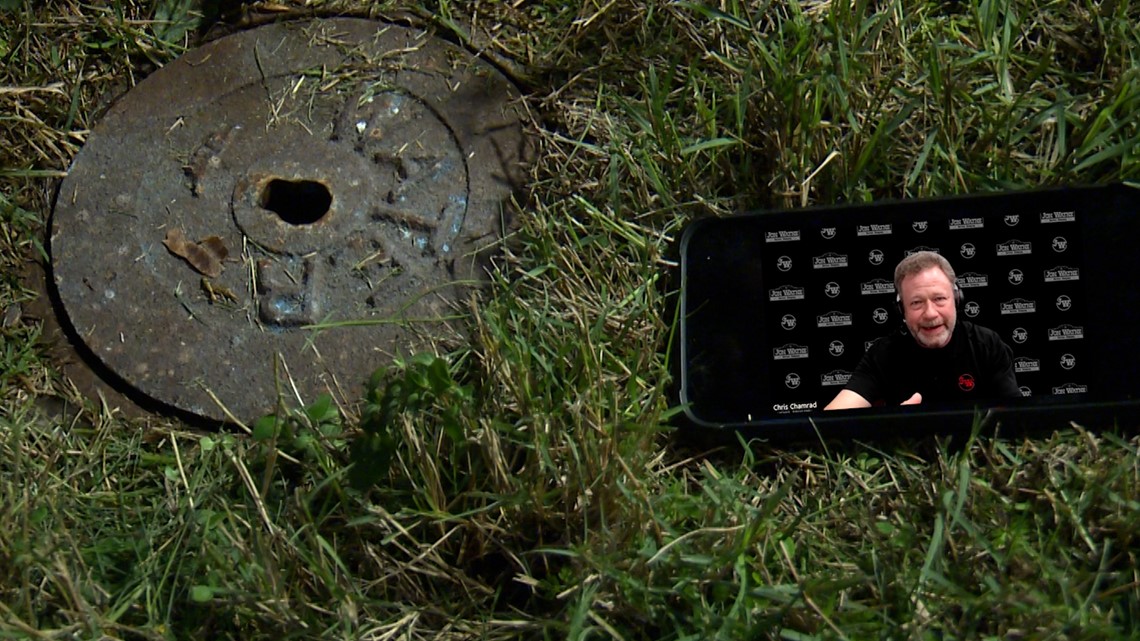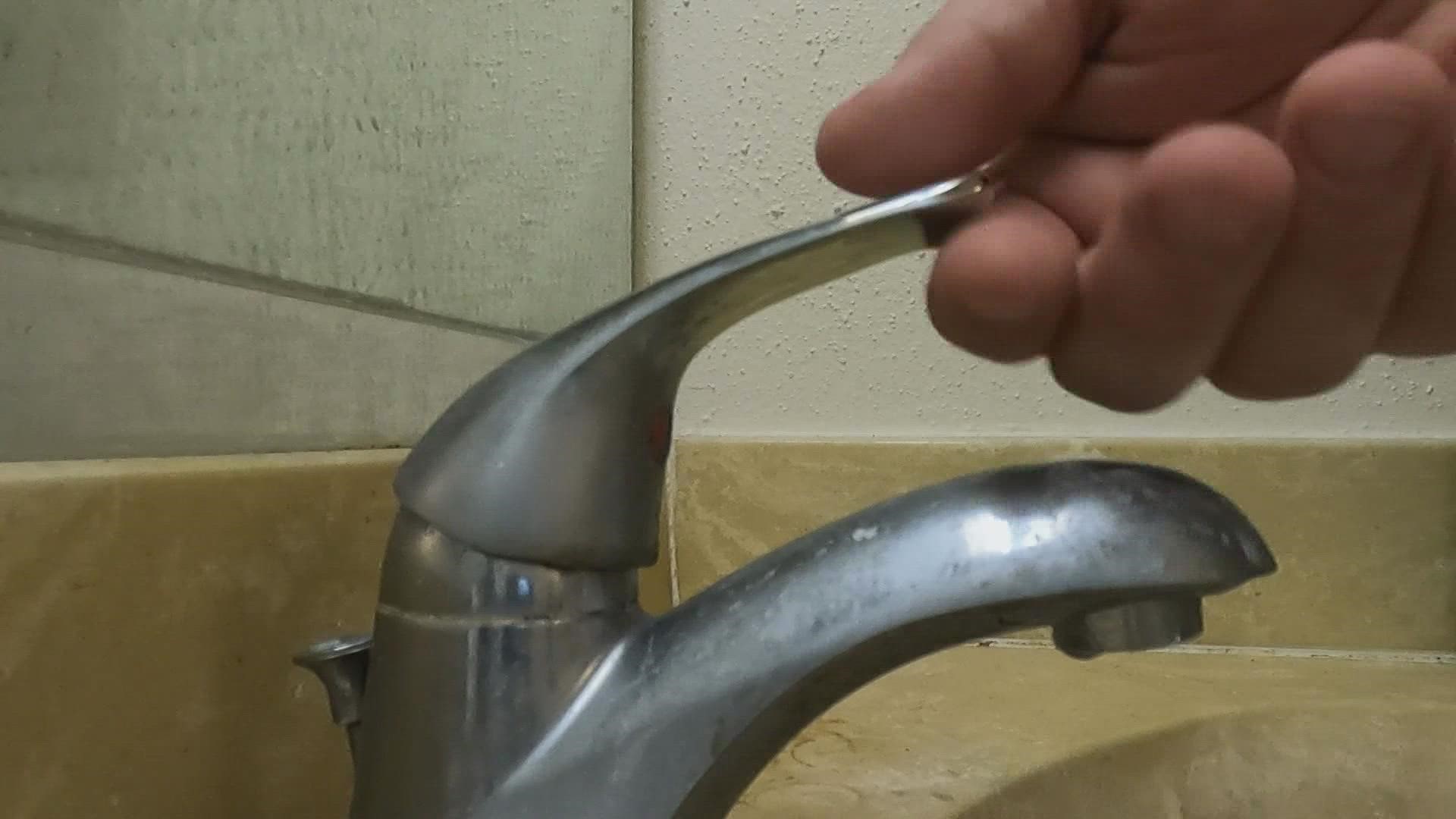SAN ANTONIO — The bags are all packed and it’s time to visit family for the holidays. But San Antonio is expecting freezing temperatures over the weekend. So, what do you do?
“As a professional I don't feel 100% comfortable telling somebody to run through all that protocol. Lock the door, drive away, you're going to be safe.” said Chris Chamrad. “There’s a lot of things that could go wrong with that plan.”
Chamrad is a state-licensed Master Plumber and Project Manager with John Wayne service company.
He said the absolute best idea would be to cancel any travel plans and stay home in case something needs attention. But if a trip is absolutely necessary, the normal cold weather protocols don't really cut it.
“If we are going to leave, the best thing that you're going to be able to do is to turn your water off.”
It may sound simple. But shutting your water off is a multi-step that it needs to be done in order.
That order is:
- 1 - Turn the water off at the source.
- 2 - Turn off the water heater.
- 3 - Open all the water valves both inside and outside the house.
- 4 - Set the thermostat for at least 55 -60 degrees.
Step 1: Turn off the water
The first step starts out at the curb. Most houses’ water valve will have a small metal lid near the street.
“they're all going to be relatively within eight to 10 inches in the ground, sometimes shallower,” Chamrad said.
If there isn’t anything visible, it’s possible grass or brush may have grown over it. Chamrad said it’s possible to find it by tapping the ground with a screwdriver and listening for a hollow metal sound. The said that can help you find and uncover the lid.
“You're now going to be going through this odd kind of archaeological find here to find this valve,” he said. “But once you dig it all up, try to exercise it, see if it works.”


It can get overgrown down there. So, come prepared with a thick pair of gardening gloves.
Chamrad said an older valve may have a round or oval handle, while newer ones will have a simple lever.
He urges caution when turning the handle, pointing out that all the dirt, grime, and moisture they are surrounded by, the valves tent to corrode or rust, and can more easily snap off in colder temperatures. That’s when you would need to call in a professional.
“If the handle is rusted off, or it's just then it's, it's, it's a goner. It's time for new one,” Chamrad said. “that's a perfect time to get the plumber involved.”
Step 2 : Turn off the water heater
The water heater cannot stay on once the water has been shut off outside the house. Leaving the heater on without water coming in can create problems in the system.
“What they can do is they can create pressure, they can move water,” Chamrad said. “They can literally start to boil the water out of the tank to where it starts to deplete down.”
How to turn the water heater off is going to depend on the type of water heater. Electric heaters need to have the power cut at the breaker. Chamrad said many electric water heaters cycle on and off automatically, so if there is a power outage while you are away and the power is not cut off at the breaker, it could end up cycling back on.
Chamrad said if it’s a gas water heater, the dial can be switched from “ON” to either “OFF” or “PILOT”
“If you turn it to the pilot, you won't have to re-light it.”
Step 3: Open all the faucets
Once the heater is off, the pipes need to be cleared. You’ll need to go through the house and open all of the valves. That includes shower valves, kitchen and bathroom sinks garage sinks and outdoor hose spigots. Chamrad said to let them drain out and leave them open, both hot and cold
“When water freezes. It expands. it gets bigger. it creates pressure.” Chamrad said. “If we've got faucets open and on all points of exit, we're going to reduce the amount of pressure that can build up and thus reduce the chance of a burst pipe.”
He said what you shouldn’t do is remove all the water from a toilet.
“If we take all the water out of a toilet bowl, we now have removed the vapor seal the vapor barrier against sewer gas.” Chamran said. “Well, in fact, we've now opened the room up to methane gas.”
He said if freezing in the toilet is a concern, a half cup of anti-freeze in the bowl and the tank can be a good preventative measure. You’ll just want to be sure to keep the lid closed if you have pets.
Step 4: Set your thermostat
You don’t need to keep your house as warm as you would if you were living in it but setting the thermostat to at least 55 or 60 degrees is helpful in keeping your internal pipes from freezing. Chamran also advises opening all the cabinets under your sinks. That will allow the warm air to get to those pipes.
This, of course, won’t do any good during a power outage, but Chamran points out that these measures are just to minimize the risk of damage. If no one is going to be at the house, there is no way to outright prevent it.
“We're still hoping and praying that everything is going to turn out great because there's still a little bit of room for something on not unprecedented, but certainly something that we don't want to have happen,” he said.
He said if it’s possible, it would be good to have a trusted friend or family member come check on the house at least once every day you are gone to make sure everything is okay.
Step 5: Getting back home
The very last step comes at the end of the trip – when you have to turn everything back on again. If you turn everything back on in the wrong order you also risk causing some damage.
The first step here is the same as the beginning – slowly turn the water back on outside the house. Once you’ve opened that valve a little bit and the water is flowing. Chamran says to walk through the house and listen. If everything sounds normal, you can go out and open the valve at the curb the all the way.
Next, you can start shutting off all the faucets in the house. It’s important to do this second, after water is flowing, otherwise you risk trapping air in the pipes and creating pressure, which could ultimately lead to damage.
The very last thing to do is turn the water heaters back on. After that, Chamran said there are a couple of things you can do to ensure everything is running smoothly.
“Now, you're going to walk through quietly you want to listen you want to look,” he said. “The last thing you can actually do to ensure that your home is stable is you could go back out to your water meter and check it and make sure it's stable. It's solid. It's not turning and moving indicating waters going somewhere.”

